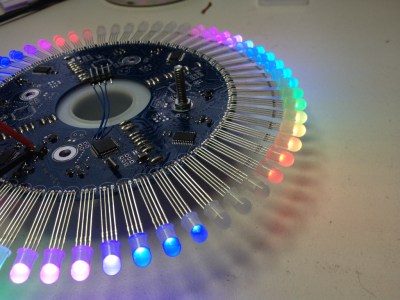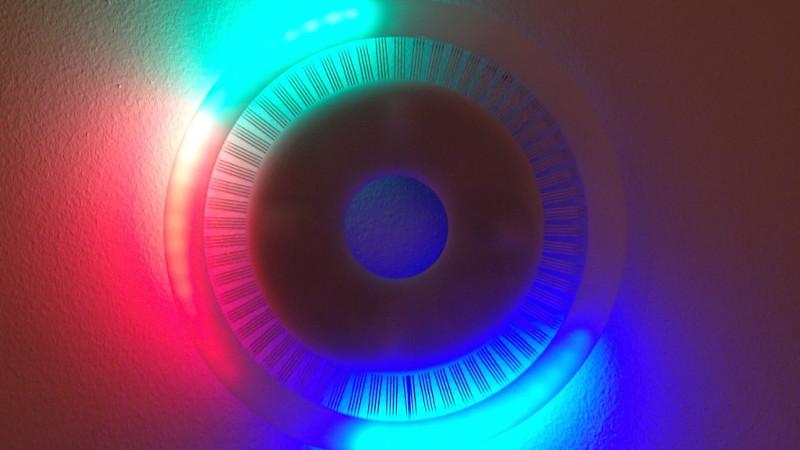
Clocks are a recurring feature among the projects we feature here on Hackaday, with several common themes emerging among them. We see traditional clocks with hands, digital clocks with all forms of display including the ubiquitous Nixie tube, and plenty of LED ring clocks. [Matt Evans]’s build is one of the final category, a particularly nice LED ring clock using wire-ended multi-colour LEDs. Other clocks produce an effect that looks good from across the room, but this one is also a work of beauty when examined in close-up.
Behind it all are four interlocking semicircular PCBs, an STM32F051C6T6 ARM Cortex M0 microcontroller which controls the clock, and a brace of driver chips. The different “hands” of the clock are expressed as different LED colours, and there is a variety of different colour and clock “hand” effects. An acrylic ring completes the effect, by covering the LEDs themselves. He’s put together a video of the clock in action, which you can see below the break.
We’ve covered more than one LED ring clock in our time, of which this 200-LED one was particularly impressive.
















Stunning clock with great motion effects.
I can’t help thinking of using the ESP8266 and picking the time from the internet, and using WS2812 LEDs and all of it as a minimalist single ring, similar to the ring clock example at the end of the article, but with one row of LEDs.
I think that’s the first thing anyone does when they get one of those WS2812 rings ;)
Nice, more stuff with STM32s!
I guess they used the 48-pin package since it has space for an LSE 32.768KHz oscillator which can drive the RTC peripheral with enough accuracy for a clock – because yes, there’s an onboard RTC peripheral!
The L0-series has space for an LSE crystal instead of an HSE one on the smaller 20- and 32-pin packages, plus they have built-in EEPROM. Using one of them might be a good idea for a V2 of this project.
I also really like the idea of writing a simulation program for displays made of those multicolor LEDs – I guess it seems obvious to people who’ve made a bunch of them, but I’ve wasted plenty of time trying to get an effect just right.
“wire-ended multi-colour LEDs” is something i never heard before. Luckily, now we have WS2812D LEDs that will simplify this build, but I have to admit the whole 4 microcontrollers is a cool way to do it.
I remember when those type of LEDs were just called “through hole”…